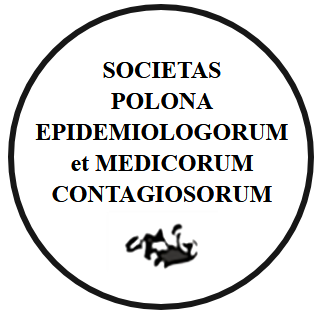ABSTRACT
INTRODUCTION. Lyme disease is the most common tick-borne disease, caused by spirochetes of the genus Borrelia, transmitted by ticks of the Ixodes genus. According to ECDC, Poland should be considered as an endemic area. The risk of Lyme disease incidence in-creases with tick habitats increase, which is a response to environmental factors and climate change.
AIM OF THE STUDY. The aim of the study is to assess the epidemiological situation of Lyme disease in Poland in 2018 compared to the situation in previous years.
MATERIAL AND METHODS. The epidemiological situation of Lyme disease in Poland was assessed on the basis of the data sent to NIPH-NIH by voivodeship sanitary-epidemiological stations and published in the bulletin ‘Infectious diseases and poisoning in Poland in 2018’ .
RESULTS. In 2018; 20,150 Lyme disease cases was registered, 2,124 people were hospitalized. You can also see an increase in cases in the second and third quarter in favor of the fourth quarter. The epidemiological situation in Western European countries is similar to the situation in Poland.
SUMMARY AND CONCLUSION. The inability to determine the clear trend of the epidemiological situation in Poland indicates the sensitivity of the surveillance system, but also the difficulty in new cases diagnosis. You can also see a decrease in the number of cases, which may be a sign of having the right tools or experience in the Lyme disease diagnosis.
STRESZCZENIE
WSTĘP. Borelioza jest najczęstszą chorobą odkleszczową, wywołaną przez krętki Borrelia, przenoszoną przez kleszcze rodzaju Ixodes. Według ECDC obszar całej Polski należy uznać za teren endemiczny. Ryzyko zachorowania na boreliozę wzrasta wraz ze wzrostem siedlisk kleszczy, co jest odpowiedzią na czynniki środowiskowe oraz zmiany klimatu.
CEL PRACY. Celem pracy jest ocena sytuacji epidemiologicznej boreliozy w Polsce w 2018 r. w porównaniu do sytuacji w ubiegłych latach.
MATERIAŁ I METODY. Do przeprowadzenia analizy sytuacji epidemiologicznej boreliozy w Polsce wykorzystano dane nadsyłane do NIZP-PZH przez Wojewódzkie Stacje Sanitarno-Epidemiologiczne i publikowane w biuletynie rocznym: „Choroby zakaźne i zatrucia w Polsce w 2018 r.”
WYNIKI. W 2018 r. zarejestrowano 20150 zachorowań na boreliozę, hospitalizacji poddano 2124 osoby. Można także zauważyć wzrost zachorowań w II i III kwartale na rzecz IV kwartału. W Polsce sytuacja epidemiologiczna jest podobna do ogólnej sytuacji w krajach zachodniej Europy.
PODSUMOWANIE I WNIOSKI. Brak możliwości określenia jednoznacznego trendu sytuacji epidemiologicznej w Polsce wskazuje na czułość systemu nadzoru, ale także na trudność w diagnostyce nowych przypadków. Można zauważyć także spadek liczby zachorowań, co może być oznaką posiadania odpowiednich narzędzi lub doświadczenia w diagnostyce tej jednostki chorobowej.
Możesz zmienić ustawienia cookies w swojej przeglądarce. Ograniczenie stosowania plików cookies w konfiguracji przeglądarki może wpłynąć na niektóre funkcjonalności dostępne na stronie.





